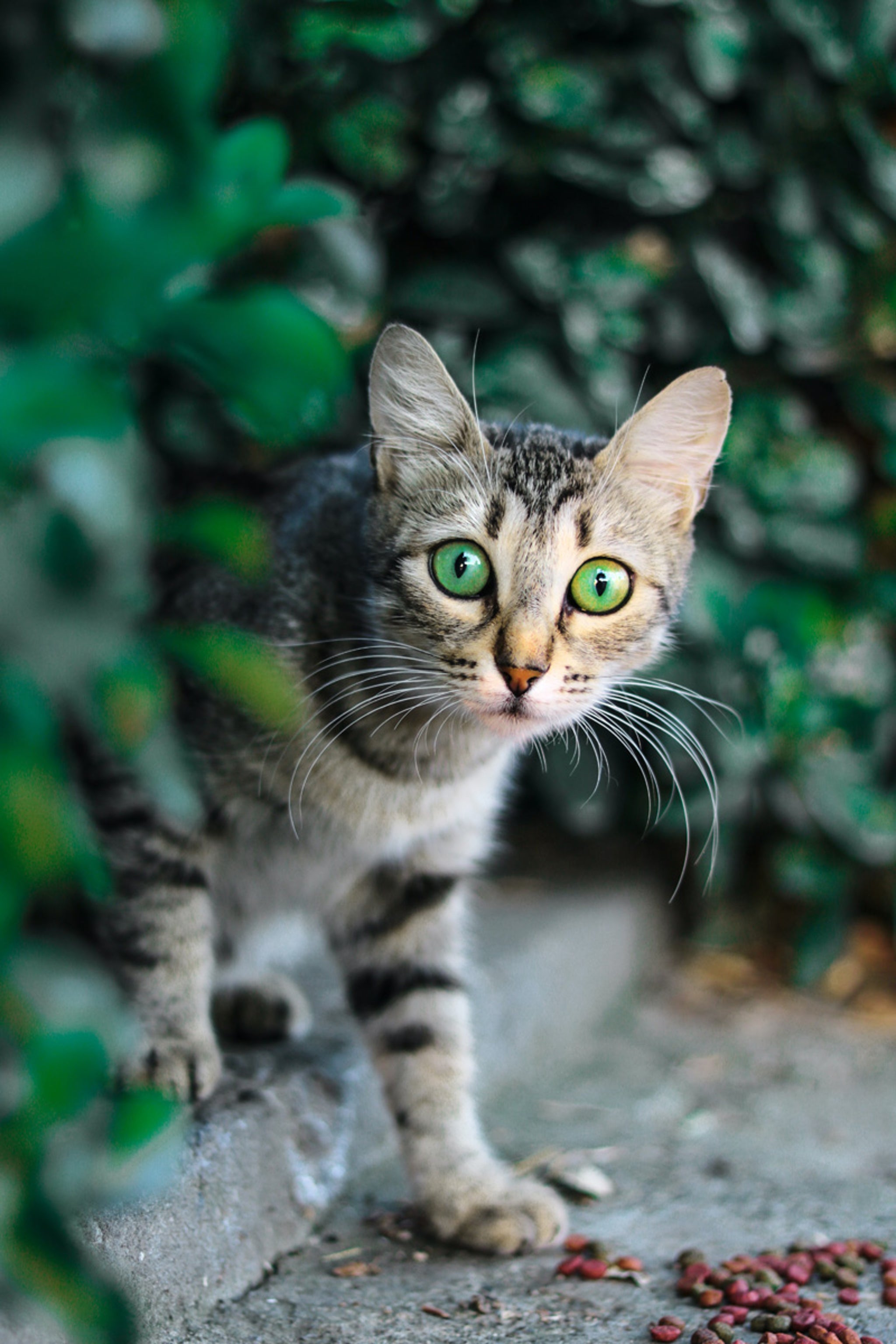Sometimes cat owners are misled to think their cat will be happier outside. There are many myths about what’s best for your cat, especially around the topic of the outside world. Yes, getting fresh air is good for all of us, but before you let your house cat run out the back door, you may want to consider a few things.
Make the Indoor World Exciting
Your cat does not need to go outside in order to have a stimulating environment. You can install perches around the inside of your home for them to reach different levels, see outside windows, and explore. Try building a DIY cat post and even personalize it with features of their favorite toys. Include feathers or other toys to mimic birds and mice.
Incorporate play time and exercise with them indoors. You can play hide and seek and join them in playing with toys. Try to find ways to make mealtime more engaging to stimulate their desire to hunt. Indoor cats have been shown to have a longer lifespan (12-17 years) than outdoor cats (2-5 years), so you could be improving your cat’s quality of life by finding ways to entertain them and satisfy their natural instincts indoors.

Understand the Outside World’s Challenges
If you do decide to let them roam outside, you should know that there are many challenges your cat could face. Cats are susceptible to diseases and predators outdoors. Studies between farm cats and house cats show that in a single night out, house cats travel an average of 20 miles past their home, while farm cats travel an average of 6 miles. Think about all they could encounter in those miles—cars, cruel people, and perhaps skunks. If you let them outside, you may also risk them running away from home altogether.
Update Vaccines
Talk to your veterinarian and make sure all of your cat’s vaccines are up to date before letting them outside. Rabies is very easily spread between animals and the Centers for Disease Control and Prevention report an average of 300 interactions between humans and rabid cats each year. In addition to the rabies vaccine, the American Humane Society recommends you get the Feline Viral Rhinotracheitis, Calicivirus and Panleukopenia (FVRCP) vaccine, a combination shot that protects them from feline viral rhinotracheitis, calicivirus, and panleukopenia. Your veterinarian may have additional recommendations depending on where you live, so it’s best to consult them.

Use Harnesses to Keep Them Close
Try harnesses to take them outdoors. You can acclimate your cat to a harness by trying it on inside first and allowing them to get used to the feeling before exploring areas outside. Some people recommend trying the harness alone for a few minutes during mealtime or play to associate it with positive atmospheres before adding the leash. Once the cat is comfortable with both the harness and the leash, follow them around indoors to allow them to get used to having someone walk with them. Then you can take them outside to explore. Harnesses are recommended over collars for both cats and dogs because they are safer and more comfortable. Make sure your harness is the right size for your cat by checking if you can fit a finger between their skin and the harness.

Create an Enclosed Area for Them
Some have called it a “catio.” An enclosed area outside like a patio for your cat. You can make one with chicken wire and wood or other building materials, or you can buy one commercially. Roofs are important to make sure your cat stays in, and you should include a bowl of water and make sure there is plenty of space in the shade during summer months. You can also personalize it with some of their favorite toys and hide treats to keep their brains active. Most recommend only allowing your cat outside in the space if you are home to supervise and check on them every once in a while.

Check for Ticks and Fleas
If your cat has been outside, give them a thorough inspection for ticks. Cats don’t develop the same symptoms or signs of Lyme disease as people do, but it can still be deadly if left untreated. Lyme disease can impact the musculoskeletal system, neurological system, lymphatic system, eyes, heart, and liver. Additionally, you run the risk of the cat endangering you or your family members. Veterinarians advise that you check your cat daily for ticks if they are outside, especially in the summer.
Fleas are a pest for dogs and cats alike. They can cause diseases in your cat and make them uncomfortable with their bites. There are flea and tick preventative options for your cat that you can talk to your veterinarian about.

Your Vet Knows Best
Talk to your veterinarian about how to best protect your pet. Veterinarians strongly recommend you have cats spayed or neutered, and microchipped. There are a number of preventative treatments available to combat fleas, ticks, and other diseases. You should maintain regular exams with your veterinarian, especially if your cat is going outside. Be honest with them about taking your cat outside so they know what to look for in exams.





